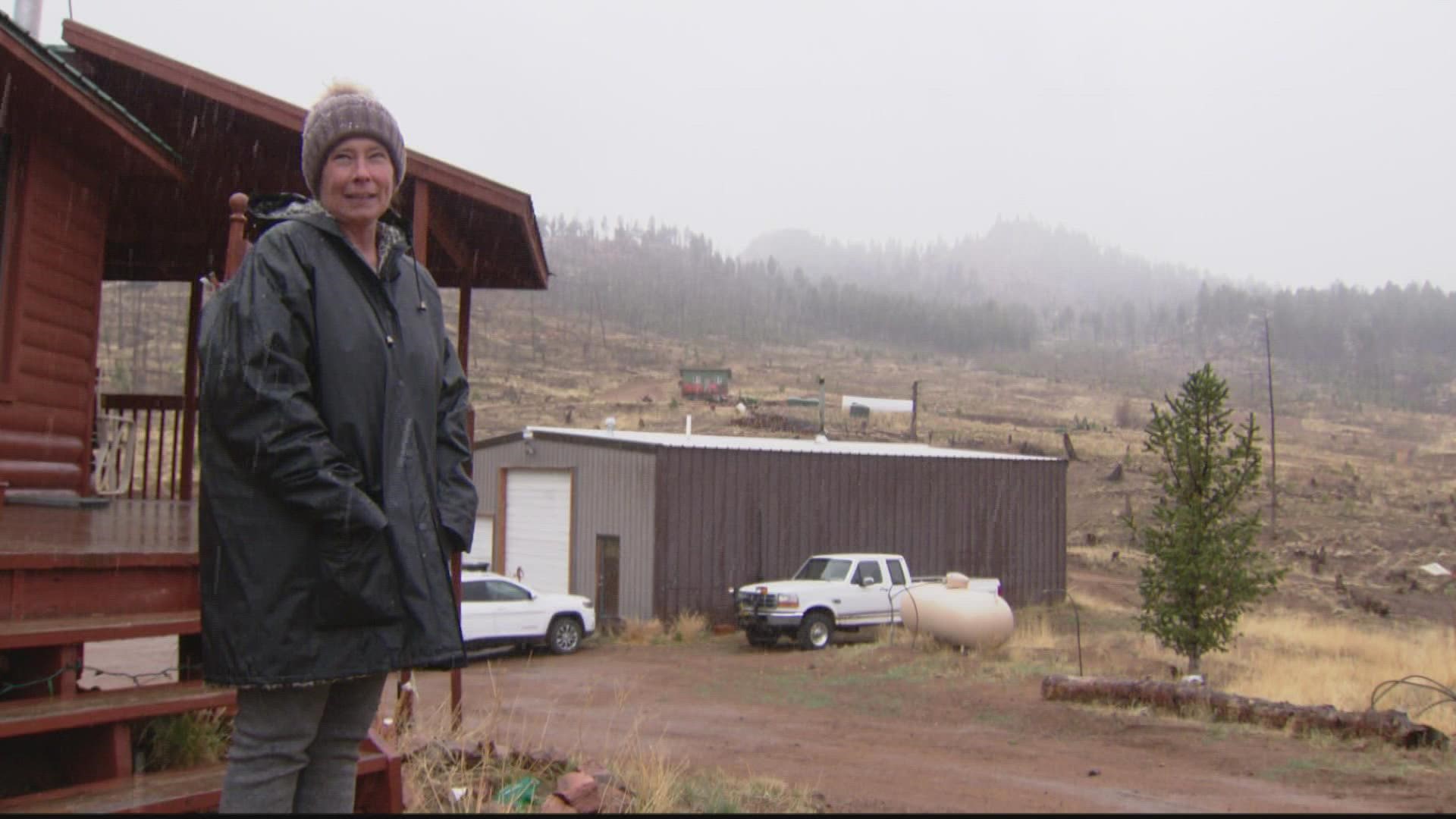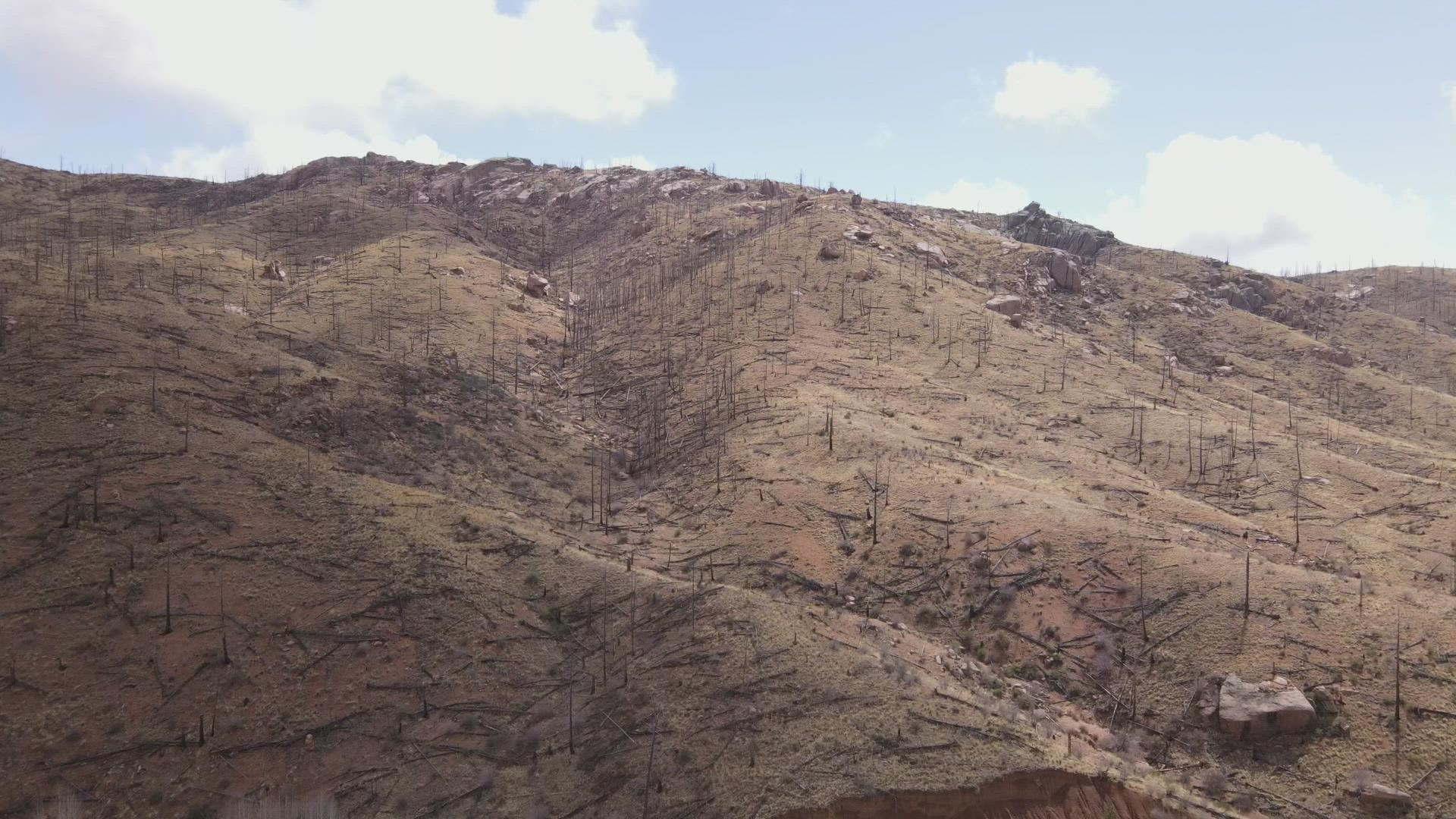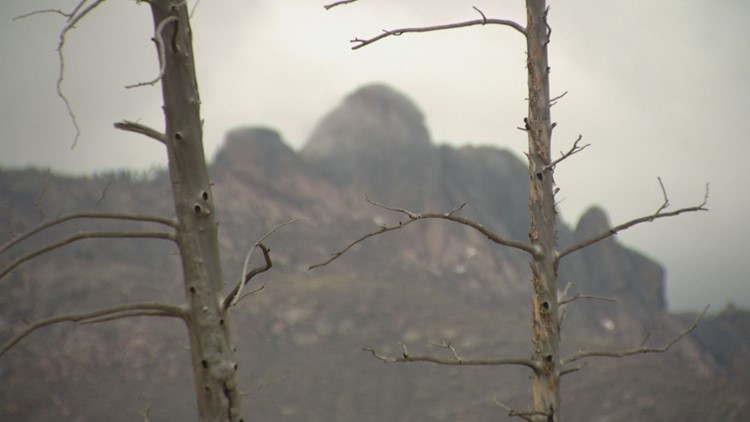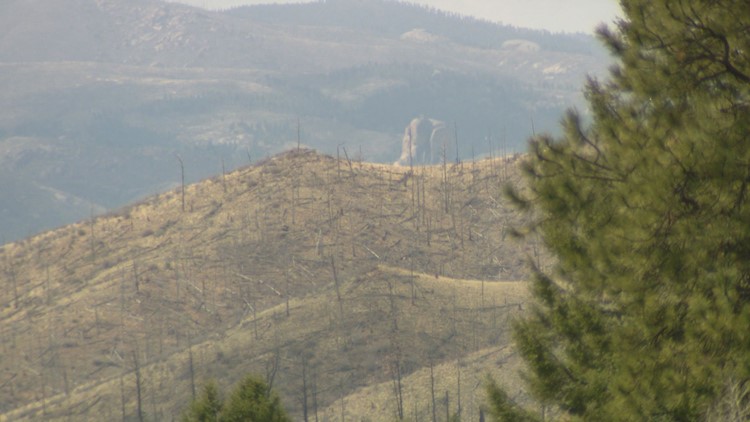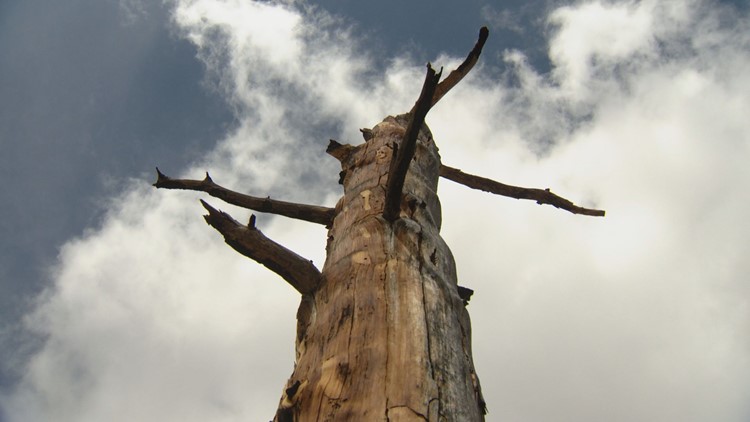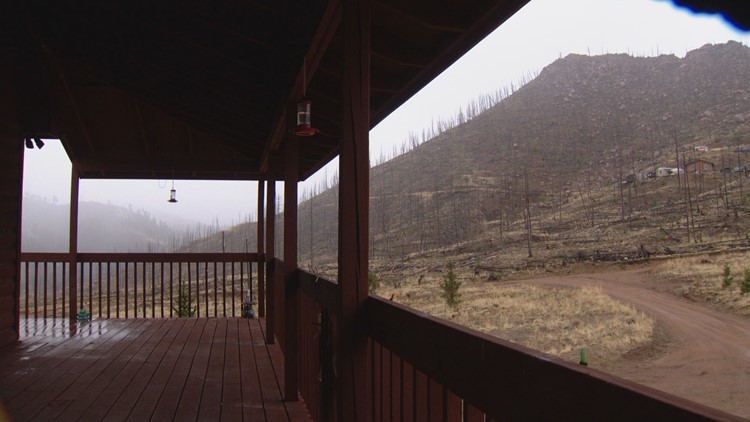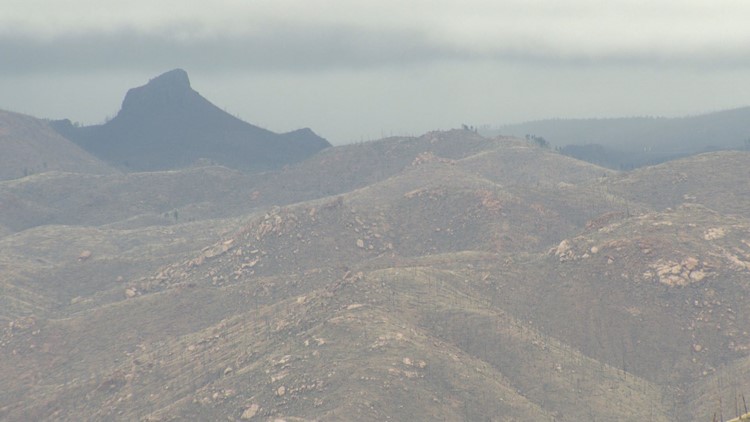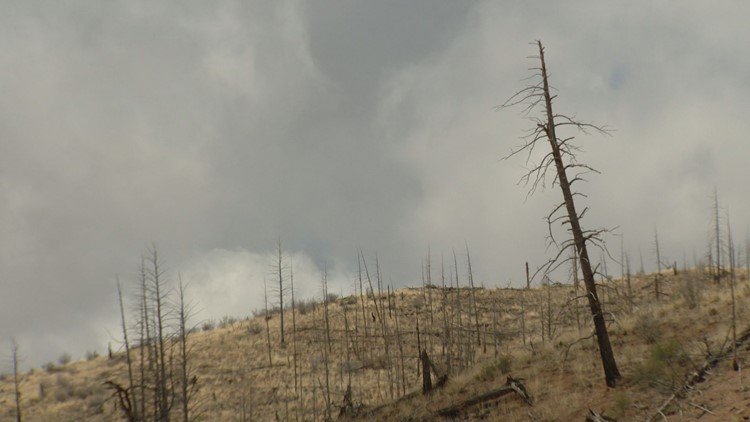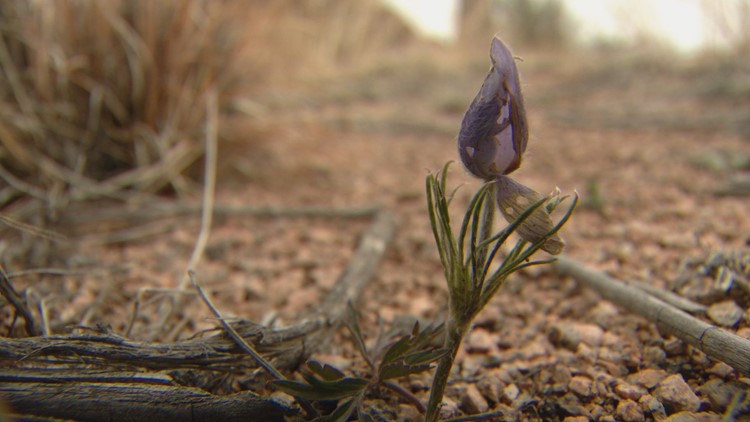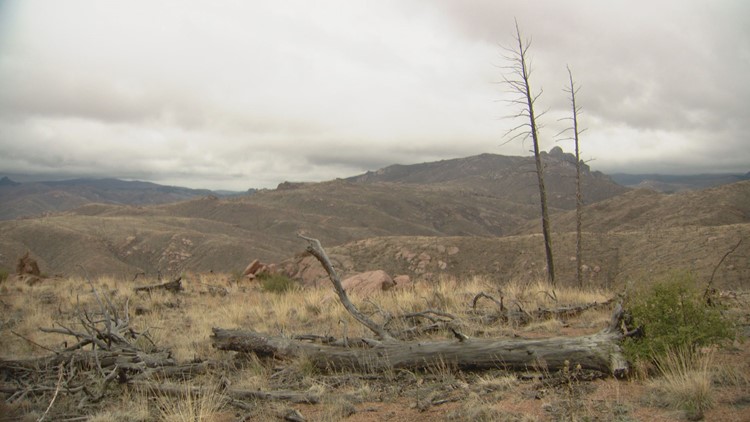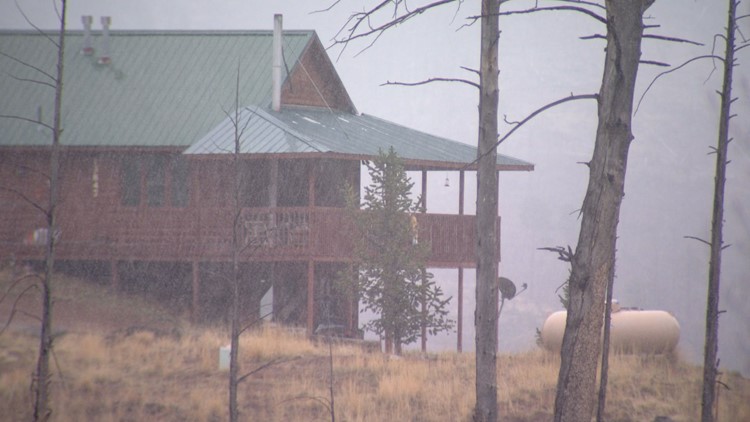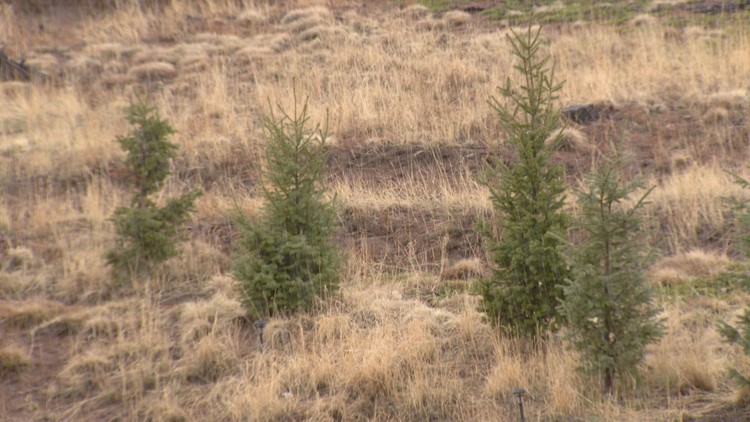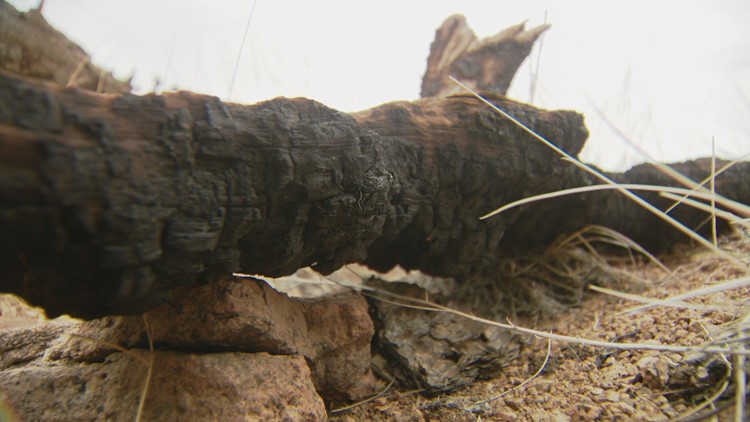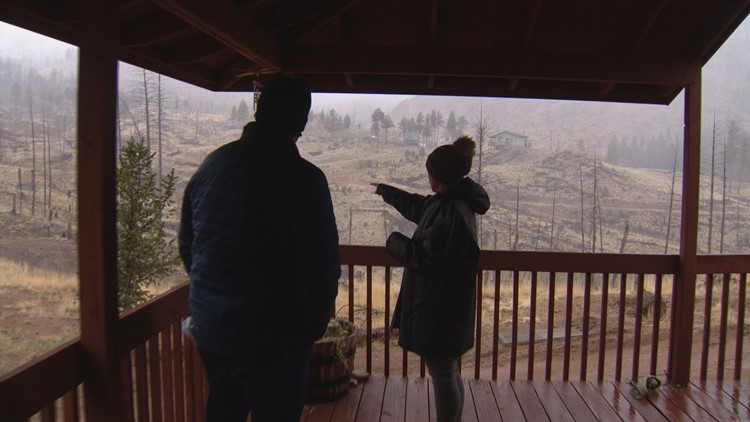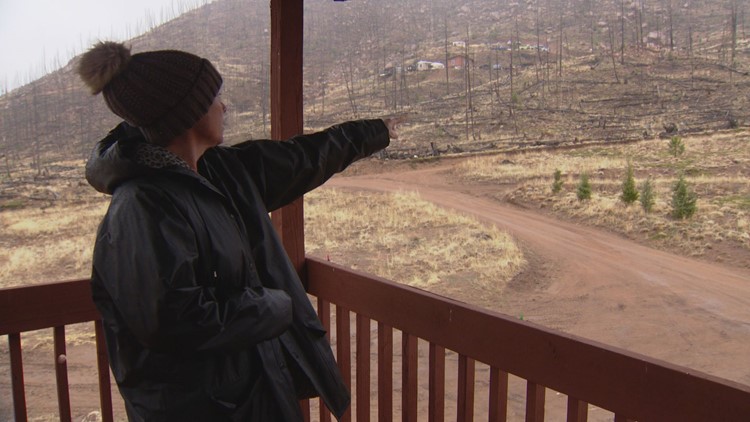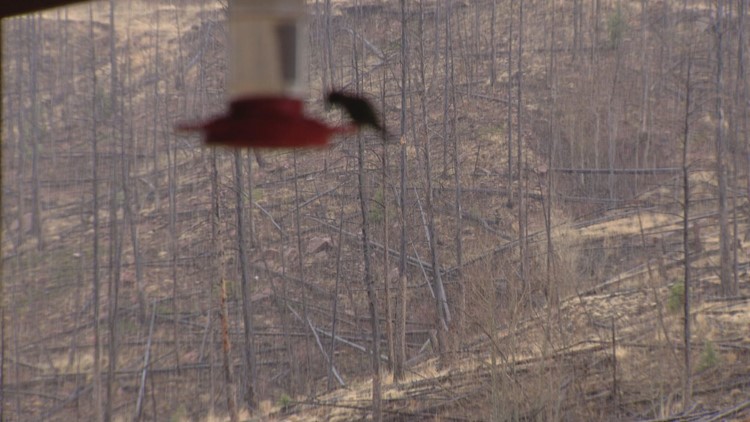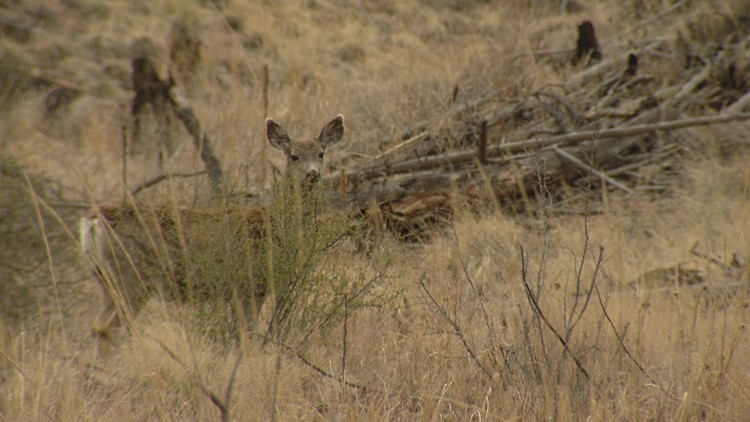DECKERS, Colo. — The beauty of nature mixes with the horror of fire outside the home of Tammy Ore near Deckers.
Four years ago, Ore bought a rebuilt home in the middle of the Hayman Fire burn scar. The wildfire sparked years before, on June 8, 2002. It burned 137,760 acres south of the Denver metro area and became, at that time, the largest wildfire in Colorado history.
"It was sad back then," Ore said. "It was black. It was dark. It was a skeleton forest."
It still is.
"When I see all the dead trees, I just see what used to be here and the beauty that used to be here and what's gonna come back," Ore said. "It's never going to be the same, but it's still going to be beautiful the way it is."
Marin Chambers, an ecologist with the Colorado Forest Restoration Institute at Colorado State University, has studied the area about 50 miles south and west of Denver for years.
"This is an 18-square-mile patch. This is unprecedented in the historical record," Chambers said.
The patch contains an area where the fire was so intense, the trees are barely re-growing even after all this time.
VIDEO: The Hayman Fire burn scar looks largely the same after 20 years.
"These environments that get severely burned are going to be changed for a long time, and it's not like other ecosystems where we see within 20 years a forest very easily and visually growing back," Chambers said.
Chambers said the problem is that seeds from existing pines are just too far away.
"The trees that are over here may get into here, but they're not going to get out way, way over there," Chambers said.
She also said the sun is too hot and the ground is too difficult. She compares it to a consistency made of marbles.
"There is no shade," Chambers said. "These are really unique soils for Colorado. It's called pike granitic soil."
The U.S. Forest Service is planting new trees, but Chambers said the effort is limited by access.
"A lot of these areas that we're looking at here that are farther from roads are not going to be reforested actively," Chambers said.
Mike Battaglia is a research forester with the U.S. Forest Service. He said the process of replanting cannot keep up with the need and the size of fires like Hayman.
"You have to grow them out in nurseries, then you have to transport them back out to the field two years later and then plant them," Battaglia said.
He said that large, severe burn areas like the Hayman Fire are becoming more common because of efforts over the years to fight fires. He said forests are growing too dense, which creates a stockpile of fuel.
Photo gallery: The Hayman Fire, 20 years later
"It's kind of like your lawn. You're maintaining your garden and your lawn. You just can't let it go," Battaglia said.
The answer, Battaglia said, is thinning out forests by cutting down trees and using prescribed burns.
"We think we can start living with fire rather than just trying to avoid fire," Battaglia said.
He said the U.S. Forest Service has a 10-year strategy that includes expansion of replanting trees in burned areas like the Hayman Fire scar and the use of more controlled burns to reduce wildfire danger across Colorado.
Chambers said it's not a surprise that the Hayman burn scar looks largely the same as 20 years ago
"Humans have a really short lens of time, and that the trees that previously lived here in this exact spot, they were hundreds of years old," Chambers said.
So, just 20 years later, Chambers does not see a barren burn scar. She sees growth on a smaller scale with wildflowers and grasses. She sees a habitat that the wildlife has adapted to.
"I'm an optimist, you know, for better, worse, I'm an optimist, and I think you kind of have to be an optimist when you're looking at some of the kinds of changes that we're seeing on our landscapes," Chambers said.
On Ore's land, some trees are coming back naturally.
"It's growing. When I was first here, it was only this big," Ore said, holding her hand about 18 inches off the ground. "It was pretty little. It's growing quite a bit since I moved in."
She's finding wild raspberries and flowers, things that she calls little signs of hope as she replants more trees across her land.
"You have to take the beauty with how it is now and in the meantime, you help it," Ore said.
In a place that looks like time stands still, Ore said time is moving -- as fast as the trees grow.
"It's doing great here. I think it's thriving. Will I see it full of trees that are dead now? Not in my lifetime," Ore said. "But, maybe 75 years from now, the kids will be able to."
SUGGESTED VIDEOS: Wildfires in Colorado

